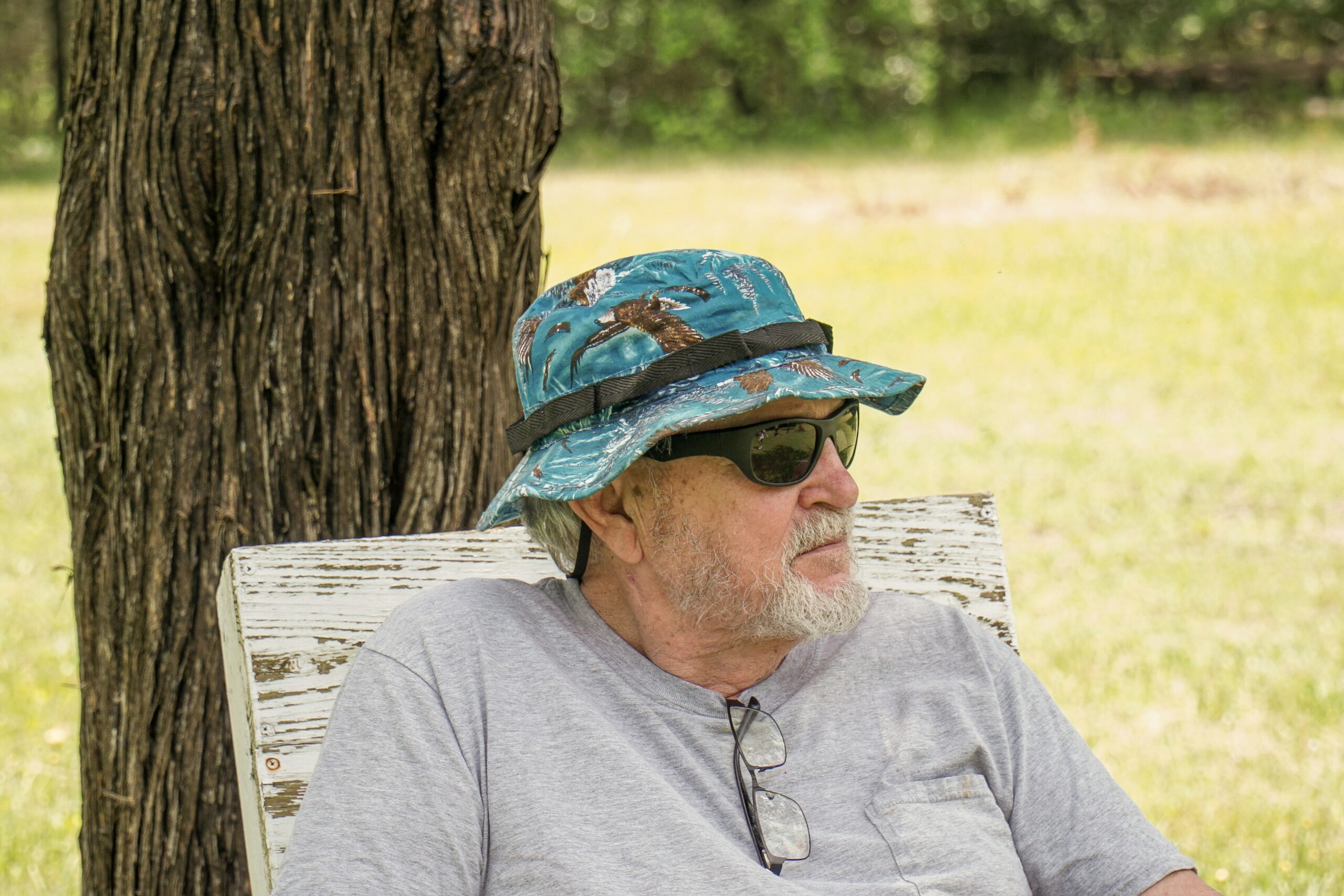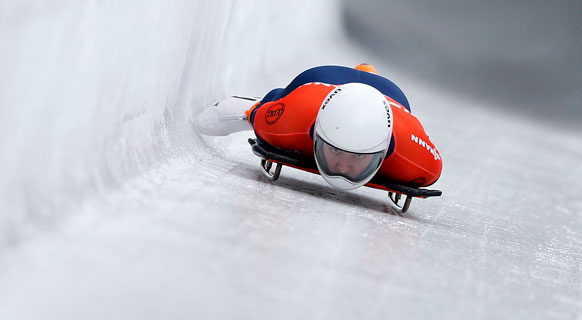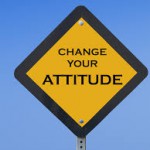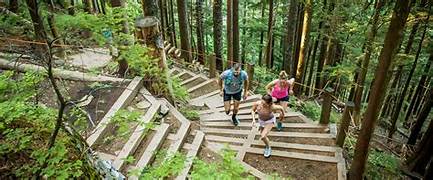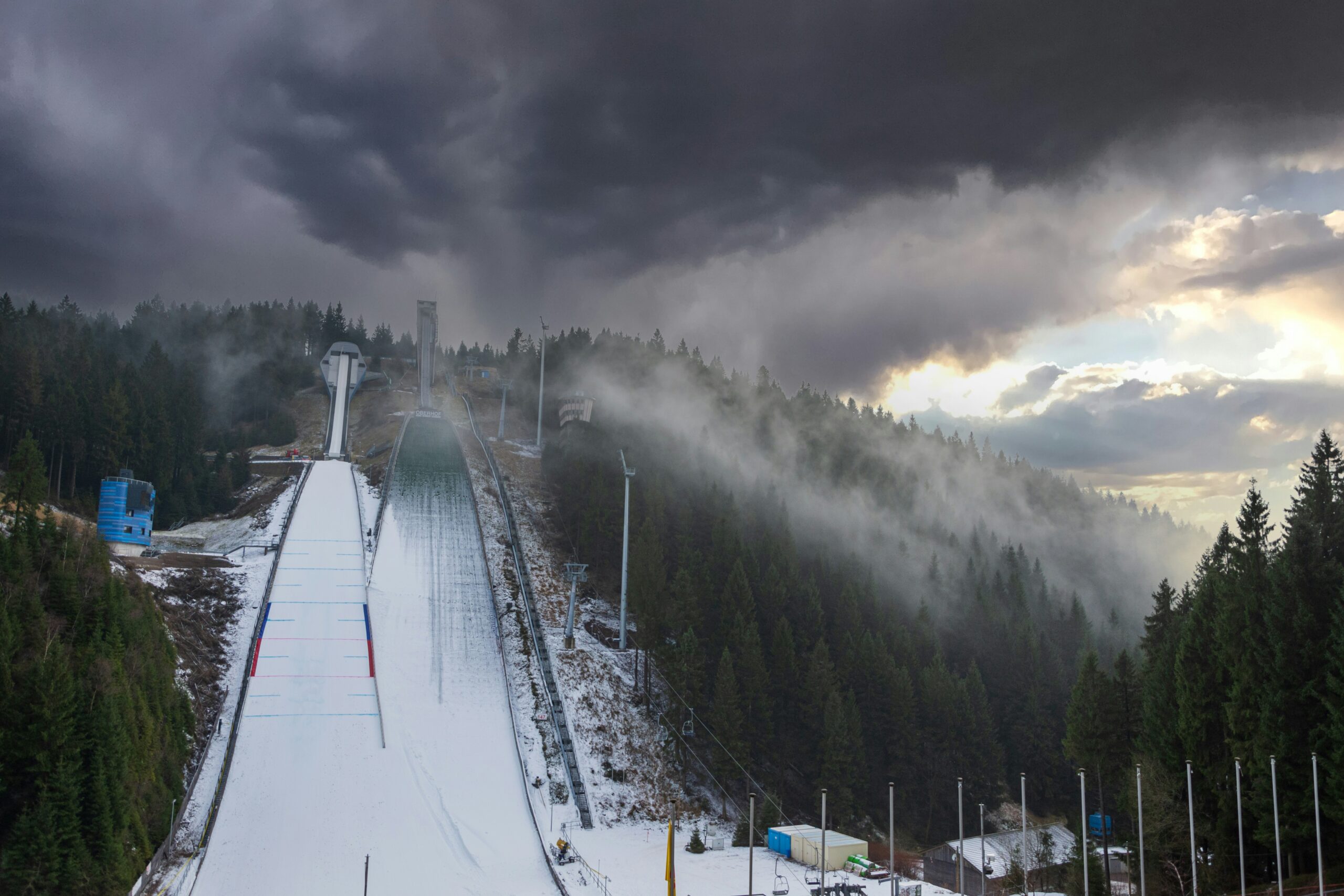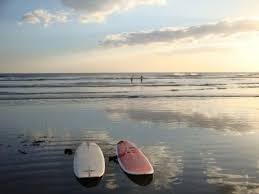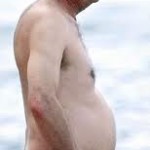One man decides, in early midlife, to pursue a crazy dream long deferred. And discovers he has bitten off more than he imagined
From Explore Magazine, Apr. 2009
“Here’s the dream,” said Don Montgomery, “Monty” to his friends. “You’re lying in a hammock, looking out past the palms. Your muscles are sore from the day’s surfing. You began your day with a cup of French-pressed coffee. You had an amazing dinner of seafood caught by the local fishermen. And now you roll over in the hammock and pull a lime off the tree and slice it in two, and you notice some pelicans flying by in formation against the sunset. This is what I’m envisioning.” He took a big bite of his club sandwich.
We were in Gastown, Vancouver’s downtown heritage district. Don was in town with “his boys”—a team of teenage rugby players he coaches, who were here to compete in the provincial finals. Don, tall and tan and tousle-haired, is a high-school phys. ed. teacher in Kamloops, B.C. Or rather, he was. By the time you read this, that First Act of his life, purview of the Old Don, will be closing, and Act Two will have begun. Even then, on that Gastown day in late spring, 5,800 kilometres away as the pelican flies, the dream was under construction. Guys with trowels and shovels had given way to the guys stringing electrical wire and fitting pipe. At the age of 41, Don was about to become a hotelier in the tropics. A man who spends a considerable amount of his working day in board shorts.
This sort of thing happens to people, sometimes—often when they start crowding age 40. Some vague restlessness begets an “Is this all there is?” moment, which begets a dream which becomes an obsession. But rarely do Second Acts entail quite such a flying leap as Don Montgomery’s. He would build a surf lodge in Nicaragua. That he didn’t speak Spanish, wasn’t much of a surfer and had never been to Nicaragua were minor details. His dream wasn’t a dream born of experience: surveying what you like to do and deciding you’d like to do more of it on a daily basis. It was, rather, a kind of whole-cloth imagining of The Good Life. Dreams don’t always make a lot of logical sense; they just make you want very badly to fall asleep so you can dream them again—and to take everyone you care deeply about down the rabbit hole with you. Don thought of his kids, Fabiana and Ella, who are four and nine, marching to the predictable beat of bountiful North American life right into teenagehood; he wanted to give them a glimpse of another world. (As it turned out, Don’s wife had her own dreams, which did not quite jibe with his, and two-and-a-half years ago the couple separated.) He imagined bringing his rugby players down there to surf; or maybe organizing a little soccer tournament—goals hung with fishing nets wheeled out onto the beach at high tide —for people from his pickup soccer league back home.
Who was his surf lodge for, after all, if not people like that? Folks who, like he himself, need a radical change—not necessarily permanent, just something to tap the barometer and see which way it’s moving. “They fly in and the next morning they’re in the water by noon and all their problems are gone,” Don explains. “And after a week they’re completely recharged and are ready to face the next part of their life”—however they have decided to live it.
“After Deena and I split up I asked myself, Who am I?” Don would tell me, later. “I’ve been a teacher for 14 years. What you have to understand about teachers is, they’re extremely conservative. If you’re a teacher, what do you do? You buy a house, you pay it off, you get your pension; and then, often as not, after retirement, you go back to work. These are the people who are in charge of teaching kids to follow their dreams?” Teachers are cheap and conservative; Don is a teacher; therefore… Clearly this syllogism needed rewriting. Who was Don? Maybe just a guy feeling scissored by two competing imperatives: You must be responsible and You must be free.
The dream, when he first dialled it up, had slightly different coordinates. It was Costa Rica he was thinking of—a place where you could once buy fabulous beachfront, cheap. But Costa Rica stopped being “undiscovered” round about 1985. An oceanfront lot in Tamarindo will now set you back a million bucks.
Nicaragua is the new Costa Rica: everyone says so, in varying degrees of breathlessness.
“Why Nicaragua? Why now?” touts one on-line real-estate site. “Because you may not find another chance like this again in your lifetime.” There are “beachfront property bargains here so cheap you’d be crazy not to snap them up.” It’s the wild west, baby, in a good way. You don’t even need a building permit. In a fairly astonishing twist, the new president Daniel Ortega—the former Marxist, Sandinista leader—has become born again and politically re-invented, and is actually inviting foreign investment as the only way to lift his people out of brute poverty. If you locate your dream here, and bring enough tourist dollars into the country, you’ll pay no commercial taxes for 10 years. The whole package is tantalizing, and within the last year, land prices had already started to spike. Had Don missed this bus, too?
“Act on incomplete information,” urges a recent bestselling book on entrepreneurial risk-taking. Its author, a precocious CEO of a Silicon Valley software company, recounts how General Colin Powell “expected his commanders in the field to make decisions when they had 40 per cent of the potentially available information. In life or death situations. And you think you need more information?”
That’s kind of how Don felt. He wanted to do this; he had no real idea how. People who buy land in the tropics often tell stories of being ambushed by things they hadn’t considered, like the salt content in the air that eventually makes all mechanical devices break down, or land deeds that prove not to be worth the paper they’re printed on. But full due diligence takes time that Don frankly didn’t think he had. If he didn’t lay his chips down RIGHT NOW he was going to be dealt out of the game. One thing he was sure he didn’t want to feel was regret. “I don’t want to die knowing there were things I was too scared to try.”
**
The city of San Juan del Sur, with its world-class surf breaks of Santa Ana and Papoyo, is the pumping heart of Nicaraguan surfing, and so it was naturally here that Don aimed to stake his claim when he came to Nicaragua in July of 2006. But the prices for beachfront were way higher than he’d expected. A little discouraged, he stopped in for dinner at a Mexican restaurant run by an expat-American named Robert Nott, whom everyone in town knew as Roberto.
Good news, the waiter told him. It was “midget night.” Roberto—in a move typical of his own strange enterprising impulses—had hired a dwarf to face all comers in a jalapeno-eating contest. When the spectacle was over (the dwarf got clobbered), the sound system throbbed to life again with hardcore punk, and Don spotted Roberto dancing with himself, in the back.
Roberto wasn’t just a quirky restaurateur, he was a realtor, and the next day Don found himself in Roberto’s office talking turkey. Other realtors here wear crisp shirts and dress pants. Roberto wore a tank top and flip-flops. He was clearly on his own trajectory—a bit of a blowhard and a big-time flirt—but Don liked him. He had a Vince Vaughn-ish kind of bandit charm, and a disarming way of making people laugh within 10 seconds that, Don says, “I wish I could tap.” Roberto’s life, like Don’s, was in reboot. In his last two stops he had, by his telling, been railroaded by a “squirrel bait” business partner and a conniving wife, and his marriage had followed the money down the drain. (“Every time I get screwed for four or five hundred thousand,” Roberto told me later. “It sets me back a bit”) — and he was now rebuilding. That kind of information would raise a red flag to some potential clients, but Don viewed it as a plus. “I thought, ‘Here’s a guy who’s hungry, he’s got really young kids and he wants to get back what he lost.” Roberto seemed to have an impressive nose for the trendlines: he’d been in early in Oaxaca, Cabo, Costa Rica, San Juan del Sur. When Don told Roberto about his dream and his budget, Roberto was clear. “You gotta go up north.” Indeed, he had the perfect property in mind for Don. “I guarantee that when I show it to you,” Roberto told Don, “we’re not going to have to go any further.”
Jiquilillo (pronounced “Hick-a-LILL-lo) is a fishing village of a hundred or so families. It seems like one of those settlements you find in Greece or Italy, where daily life has repeated itself for ten generations. By day, kids in diapers chase chickens around tiny huts with tarps for doors. In the trapped heat of evening, people rock themselves asleep in hammocks while teleromans play silently on TVs propped up on boxes—giving the scenes the air of sitcom sets: living rooms without walls.
Roberto squired Don through the town and then pulled the car onto an overgrown little washboard road, toward the sound of the surf. “As we pulled up I got chills,” Don said. “I knew. I knew. I couldn’t get out of the car.”
Could it be? All this—a slice of paradise right out of Central Casting—for $15,000? Back home in B.C. that much would get him…a deck. True, it wasn’t land he could have clear title to; almost all beachfront land in Nicaragua is “concession” land: government-leased. And in theory the leased status means that at any time a hotel chain could buy the land for the amount the owner originally paid for it plus improvements. But “Roberto figures there’s basically zero per cent chance of that ever happening in our lifetimes,” Don told me. Back in town, Roberto’s lawyer traced the provenance of the land—looking for telltale trouble-signs like a lot of different owners in quick succession—and pronounced it clean. As soon as the paperwork was done, they could start building the lodge.
They shook on the deal. Roberto scribbled out a note about where to wire the money. Back home in Kamloops, on his lunchbreak from school, Don slipped out to the Royal Bank, took out that piece of paper, and released the funds.
Then he went back to the school and promptly got a very bad feeling about everything. Roberto’s big selling point was that he wore every hat. He was the man who found the land that sparked the sale and knew the lawyer and would hire the guys to clear the land and plant the trees and lay the bricks to build the house that Monty dreamed. Which made it easy. And problematic. To depend so much on one guy was like researching your entire school report from one source—and it wasn’t the Encyclopedia Britannica; it was The Boys’ Big Book of Things to Know. But Don had felt he had no choice. If you don’t speak the local tongue, you’re stuck. “You just have to find someone you can trust,” Don said. “I went with my gut.”
Don is an inveterate optimist: it’s an appealing trait. But now the thought occurred to him: I just sent my investment to a guy I’ll never see again. Worse, he hadn’t just bought one lot: he’d bought five: four in Jiquilillo and one in nearby Santa Maria. He kept checking the phone for messages that everything was okay. A week went by. “It’s gone,” he thought of his money. He grew furious. He imagined going back to Nicaragua to hunt Roberto down, vigilante-style, and, well (retribution, Canadian-style) maybe smash his patio furniture. Then the phone rang. It was Roberto. He’d been up-country, out of reach. The money? Oh yeah, got it, no problem, thanks, it was all a go. Alone in the house, Don let out a shout that shook the windows.
Don returned to Nicaragua in December. He had a surf lodge to build. In San Juan del Sur, Don and Roberto started blue-skying ideas of what it might look like. Roberto grabbed a napkin and drew a picture. An architect would charge at least $500 to create real plans. But “my neighbour’s kid is in architecture school,” Roberto said, “and I’m sure he’d do it for a hundred bucks.” They walked the napkin over. The next day the kid came back with blueprints.
**
The beach at Jiquilillo is fine white sand that stretches unbroken for nine kilometres—and much farther at low tide, when you can walk all the way to Santa Maria, a little thumb that juts into the pacific like a new Key West in the making. The pounding surf sends up a mist that hovers over the foreshore, so that looking back down the beach from the nearby estuary is like looking down the barrel of a gun through the smoke of the discharge.
Don is of the view that he got the best spot on the whole beach, and it’s a hard claim to dispute. A grove of palm trees shades the lodge and right out front is a tidy beach break. The swells march in, one hard by another—shoulder-height and consistent. The most surprising thing about the beach is that it’s empty. Earlier in the week a young couple from the surfing hotspot of San Juan del Sur had visited to check out the scene here in the north. The guy had recently been nearly decapitated by the fin of the board of another surfer who’d dropped in on his wave. On hot surf days those southern beaches, it seemed, were becoming almost unsurfable.
The distinction of Don’s first-ever lodge-guest has fallen to his gym-teaching colleague, Stephane, who has come to beta-test the lodge before the first paying customers arrive in December (and who, by the second day, was already out scouting for land around here himself). Don has aggravated an old gymnastics injury, and his stiff neck prevents him from joining his pal in the saltchuck. He stands watching as Stephane paddles out on the longboard, duck-diving through the first rank of waves toward the more uniform breakers beyond. It’s donkey work, the hard front-end load of surfing. In Stephane’s case, it helps that he has shoulders the size of mature pineapples. Further to the south, because of the way the currents run, the water temperature is more variable; at Christmastime the water in San Juan del Sur is often quite cool. But here the water is an unchanging 25 or so degrees Celsius—which means you can stay in surfing all day, or at least until your muscles gas out.
Two more fellow teachers from Kamloops—Tracy and Stephanie—arrive a few days later. They’re both newbie surfers, so they are getting the “Full Monty”—dryland training and then a little hands-on guidance in the low surf. Don is eventually going to have to hire an actual surf instructor (perhaps Roberto’s neighbour’s son, who is, according to Roberto, one of the top surfers in the country). But in the meantime, for surfers of this level, he’s actually pretty good at explaining things, in the manner of gym teachers who confidently teach sports they may not excel at. He has Tracy “popping up” like a champion, albeit on land.
It’s somehow fitting that one man’s search for the good life—to the extent that the search for the good life is also about the search for meaning—should somehow involve surfing. Not long ago, David Milch, who created NYPD Blue and Deadwood, appeared on a talk-show to discuss his new series John From Cincinnati, a dark and quasi-mystical surfing drama set in a gritty Southern California town. What drew him to the subject of surfing? “The wave is the only visible embodiment of what physicists tell us all matter is composed of,” Milch said. Okay, but what’s the show actually about? “If God were trying to reach out to us, and if he felt a certain urgency about it,” Milch said. “That’s what it’s about.” Milch had been a drug addict in early life, and when he discovered surfing he found himself chasing the dragon all over again. “The essence of surfing is so compelling,” he said, “that it makes all other parts of life pale by comparison.”
Don is surely onto something here, zeitgeistwise, for surfing seems a perfect sport for boomers clinging to the illusion that they can somehow forestall infirmity. Yet at the same time it’s hard to imagine another sport that so squarely confronts you with your own physical decline. Kids make it look as easy as it theoretically is: you just “pop up” while you still have the stable power of the breaking wave under the board. The sad truth for most boomers is, by the time you pop up, it’s all over. Still, just being out there is its own kind of high. Your worries aren’t gone, exactly: you just can’t hear them for the drumbeat of the sea.
“We need to name this surf break,” Don said. “That’s how you get your place mentioned in the guidebooks, I think. All the beaches down south, the breaks have their own names. But nobody has named this one.”
“Monty’s Crack?” Stephane offers.
Don prefers the coinage someone came up with the other day, and in the absence of a strong veto, it becomes the winning candidate. Behold, he thinks, with no small satisfaction, looking out from his land: “The Break of Don.”
There is no book that tells you how to run a surf lodge in Nicaragua. There are guides to visiting Nicaragua, and to living in Nicaragua, but to start a business here requires a certain amount of extrapolation, and intuition, and luck.
When I arrived in June, Don picked me up at the airport in Managua, in Roberto’s Kia. The city smelled like a steam room in which big men had been burning diesel to cook meat. He was navigating with the map from the car-rental place, which wasn’t much help since there are no street signs in the city—and anyway, a lot of the streets have the same name. He had been beetling around non-stop here for two weeks. The neck strain was worsening. His posture was cadaverously stiff, which gave him the air of a poker-faced president, in diplomatic talks, about to cancel a billion-dollar defence contract, and the only thing preventing him is that he can’t shake his head.
He was exhausted, but quietly pumped. “Less than a year ago today was when I first came to Nicaragua,” he said. “I was searching for something, and I knew it was out there, and I found it. Maybe when you want something badly enough, it comes.” He had now made three trips here: to buy the land, to make plans, and finally, this time, to host his first trial customers at a hotel he had taken on faith was being built.
We drove through the night, past roadside billboards of Ortega with an upraised fist (“Rise up, poor of the world!), and spavined horses pulling buggies, and young men dangling iguanas by their tails, selling them for soup. Managua was never properly rebuilt after the 1972 earthquake that collapsed it; instead it just spread out into a sea of low-rises and markets: the ecstatic catastrophe of urban Central America. Which makes driving challenging. The car carried no insurance—you can’t always collect if you have insurance, so why bother?—and in lieu Roberto had affixed a little “Jesus” decal on the back, near where the licence plate would be, if there were one. (Later in the week we would be pulled over. The officer looked at me sternly and demanded three dollars. “Por que?” asked Don. “Coca-Cola,” the cop replied.) “You’ll notice that people are honking all the time,” Don said, honking indiscriminately himself. “But they’re not mad. They’re just talking. See, the people here have more fun than we have. They’ve figured out how to be happy.”
On the roads, as in the stores, no one appeared to be in any hurry. “Manana” and “Tranquilo” are the unofficial national mottoes, and it seemed an ethic to aspire to unless you were, say, trying to set up a hotel before leaving the country in three weeks, and actually had to get some stuff done.
For Don, it had been a month of surprises, not all of them pleasant.
Progress had been slower than expected. Back in June, Roberto had called to say that work had been temporarily suspended while everyone “waited out the typhoon.” (This did not bode well: the rainy season had not even officially started by then.) It was also Roberto’s sad duty to report that the first builder he’d hired had absconded with a pile of building materials—which he was using to start another project. Don’s costs were nosing toward double the original estimate.
The lodge itself—a four-room cabana with a raised thatch palapa out front—was in place. But there were signs Roberto hadn’t fully grasped the design aesthetic Don was after—which you might call Gilligan’s Island Modern. He had installed fluorescent lighting, which is cheap but which, in Don’s estimation, “sucks your will to live.”
The bar was in place, but kind of in the wrong place: right in the middle of the floor, splitting it up. “Hm.” Don furrowed his brow. “On the napkin it looked perfect.”
There was plumbing, but for a while no water flowed because someone had spilled cement inside the pipes.
There was electricity, but the tradesman hadn’t properly insulated the wiring, and one day a piece of sheet-metal roofing touched an exposed wire and fire shot out of the fuse box and the guest rooms went dark—and they would stay dark until one of the builders showed up to fix it. The main builders, a gentleman named Veintiuno (Twenty-One) and his son, Veintidos (Twenty-Two), seemed to come to work when it damn well pleased them. “It’s like anywhere,” Don said. “When the boss is away, the mice will play.”
Don had heard one too many stories of people who start surf lodges in Central America and to staff them transplant folks from back home who are more interested in surfing than working. “I can’t tell you how many friends have said, ‘I want to work for you. But I want to hire locals. This is really, really important to me.” Don conveyed that wish to Roberto, who dutifully hired on Don’s behalf a local woman named Juana to be the cleaner and cook. Juana oversaw the building of the lodge, and then promptly moved her family in: not all of them, just two of her 15 kids, including a young son Ramon who was soon eating Don out of house and home. (Also part of the package was a white-faced monkey named Charlie, which used to belong to Roberto but lives in the surf lodge now, like a firehouse Dalmation, and has already generously shared his fleas.)
The actual provisioning of the lodge was proceeding haphazardly. Don had nailed some details, like seashells lining the path to the surf, but forgotten some basics, like towels. There was a garlic press, but no cereal bowls. He sometimes seemed like an orphaned kid who suddenly finds himself in charge of both parents’ responsibilities: running the household and running the business.
“I’m going to be fluent in Spanish within a year,” Don announced confidently, not long ago. A couple of months in to that pledge, we’re a little…behind sched. The language barrier is a problem. It’s hard, for example, to find a tire-repair shop when you don’t know the word for tire. Simple questions morph into deeply mysterious riddles that occupy just way too much RAM. Why do the Stop signs say Alto when alto means up? Why do they sell milk in bags but not the little plastic pitchers the bags sit in? One day it took close to 10 minutes to figure out what supplies the workmen were asking for—“two libra de clabo, four pugabo.” Ramon was recruited to write it out, his note was deciphered via Spanish/English dictionaries, and the answer eventually emerged: two pounds of four-inch nails.
One afternoon Don popped into a notary’s office in nearby Chinendega to wrap up some paperwork on the land sale. It occurred to him to ask whether he needed a business licence.
“Licence commercial?” he said.
“Si.”
He pantomimed someone eating, sleeping and surfing Chez Don. “Clients de Canada, payer money aqui.” He pointed at his chest. “That’s a business, eh?”
“Si.”
“A licence importante?”
“Si. Muy importante.”
“Mi payer Juana. No bueno?”
“No, no.”
“Okay,” Don said. “So what do I do?”
It wasn’t entirely clear. It seemed to involve going to immigration in Managua and filling out paperwork. He made a mental note to investigate this further, adding the matter to the list of things that needed to be done before paying guests arrive en masse at Christmastime.
Many times a day Don and Juana peered at each other across a gulf: he unable to tell her, for instance, to please not use half a bottle of oil in her cooking each night. Don celebrated his own breakthroughs. “I’m no longer speaking Spanish like a one-year-old!” he said triumphantly one afternoon. “I’m Speaking Spanish like a two-year-old!” Once I caught him practising his Spanish on the monkey. He was, often and unaccountably, brimming with good cheer. “It seems complicated now—the language barrier and all,” he said. But give me a month. It’s going to be a piece of cake.”
“What makes a place like this great?” Don asks, beer in hand, in a rocking chair on the patio one evening. The night seems almost to answer the question itself. It is an orchestra scored for crickets and waves. Overhead, the sky looks like a painter’s dropsheet, it is so staggeringly full of stars.
“Well, good food’ll take you a long way,” says Stephanie, who has engineered tonight’s meal of fried snapper. “The first thing you need to do is hire a real cook.” True enough, Juana is not going to knock Mario Batali off Iron Chef anytime soon. The food, at least until the guests took over the kitchen, was dire. But it’s going to be extraordinarily tough to fire Juana: maybe he can reassign her to other jobs that play to her strengths, such as keeping pigs off the property with the slingshot.
Everyone agrees, too, that there need to be other things for guests to do besides surf when they wake up on Day Two unable to lift their arms above their waists. Sunset horseback rides? Barracuda fishing in the estuary? For sure a brisk hike is in order—and not far away a fairly awesome one presents itself. On a little peninsula northwest of Jiquilillo lies the dormant volcano Cosiguina that, before it blew in 1835, sending ash as far as Jamaica and Mexico City, was one of the largest volcanoes in Central America. Nicaraguans themselves virtually never climb it—indeed, the whole concept of going on a strenuous “hike” for “pleasure” makes the faces of local Nicas cloud with confusion—but guides will take groups of visitors into the dry coastal rainforest around the volcano that is now a national park.
Don has arranged a little scouting tour for tomorrow, to see whether the volcano trip is worth offering. The outing is being brokered by Nate Yue, who comes round to collect everybody’s money.
Nate, a 24-year-old Asian-American who runs a nearby backpacker’s hostel called Rancho Esperanza, is a quiet fixture in Jiquilillo. He first came to Nicaragua in 2001 with a small American NGO to help clean up the aftermath of Hurricane Mitch. Rebuilding efforts stalled when the NGO pulled out, but Nate had established roots in the community, and had seen the ongoing need, and he came back again.
Rancho Esperanza is the kind of place that, had he cut loose for a short surf vacation before the Salt March, Gandhi might have chosen to stay. For one thing, visitors here volunteer their time in any number of community projects, such as helping children to read. And the place barely leaves a footprint. Grey water from dishes irrigates the trees and the organic vegetable garden. The pump that sends well water to the shower tank is a bicycle that you sit on and pedal (it takes 20 minutes to fill the tank). Also, the rates Nate charges guests are so modest they barely cover costs—which is okay, because he’s not in it to make a profit.
Nate is the conscience of Jiquilillo, and therefore the conscience of everyone in it, including Don. In the Indie movie about this place, the hero would be Nate. The villain would be the shrimp farmers, denuding the foreshore and pumping the larvae full of antibiotics that may change the ecology of the whole surrounding area.
Don would be the guy in the middle, running between the raindrops. Trying to do the right thing (10 per cent of his surf lodge’s profits he’ll return to the village) without bankrupting himself. Trying to negotiate the modern capitalist predicament, to find a place somewhere between impossible idealism and rank opportunism. To promise fun without quite making the Jet-Ski crowd feel welcome. To keep it real—to remind people what real is (and real includes fruit shakes with seven-year-old Flore de Cano rum in them: why not?) without instituting forced marches through the slums of Managua, and mandatory mea culpas every night at nine.
Nate gathers $35 from everybody. He moves slowly, and there’s a heaviness about him, the vaguely hangdog mien that comes from living a whole life at that extreme end of the ethical spectrum, where an imagined paradise ultimately, inevitably becomes a burden. He reminds everybody to be at his place tomorrow at 4:30 a.m., sharp. He’ll supply the water.
The hike up Cosiguina is no mere stroll. Everyone is slickered in sweat as we approach the crater rim. Black vultures gyre overhead, singling out the old and weak among the hikers by scanning for baldspots. Lime-green macaws dart in the warm winds sweeping up the cone.
By 11 a.m. we’re standing on top, with a view of three countries, two oceans and a gulf. Scanning wide, you can see Nicaragua’s Caribbean Coast shading up into Honduras—the Mosquito Coast (where, as Theroux’s character Allie Fox put it in the novel of that name, “if what you want isn’t washed up on the beach, you probably don’t need it.”). And, westward, the pencil line of blond beach in El Salvador that some surfers have already deemed the new, new thing.
And you can see the peninsula of Jiqualillo. The little pinch of land that’s preventing it from being an island is perilously thin. From here the full extent of the network of estuary veins that runs all through the land is clear.
Earlier in the week, a local man named Nicolas, in a gimme cap and flip-flops, wandered in to Don’s surf camp. He had some beachfront he was looking to sell, and wanted an honourable buyer who wouldn’t just flip it for profit. Don and Stephane went to check it out, walking the beach at low tide to get there, past the shrimp farm, which was guarded by a sombre-looking young guy with a machine gun.
The land happened to sit beside a fabulous surf break that Don had paid a boatman to run him out to the previous week: an ideal spot, in other words, for a surf lodge. But it was no accident that Nicolas had insisted on coming here at low tide. It wasn’t clear how you’d get here otherwise; at high tide a lot of this land would be underwater. Right next to the property Nicolas was selling, mangrove trees spidered out of the water of the estuary, which bloomed into a big lagoon where the shrimp farmers grew their larvae. It could have been the Everglades. It was impossible to avoid the thought that what’s on offer here, in the beachfront real-estate market of northern Nicaragua, is like the proverbial swampland in Florida.
The sea is reclaiming the land at a truly startling clip. A glance down the beach reveals the recent history. At intervals, 30 or 60 or 90 feet offshore, nosing out of the seabed like reefs, are the concrete foundations of homes and hotels that used to dot this coast back when Jiquilillo was a holiday playground of wealthy Nicaraguans—as recently as 15 years ago.
“In the tsunami of 1992, everything was wiped out,” Nate told me. The few who tried to rebuild were punished six years later when Hurricane Mitch pounded ashore and wiped everything out again. After that, all bets were off. It’s no great surprise that beachfront land is vulnerable, and therefore a gamble—the story’s the same now all over the world. But the speed of the erosion here, thanks to the land being entirely cleared for commercial development, is truly breathtaking. No obvious solutions present themselves. The Southern California strategy of continuously trucking in sand is hardly feasible. And the government isn’t going to spend millions on a big breakwater.
It’s one of the reasons Nate sees his own Nicaraguan venture as coming to a natural close. Not long ago, a winter storm sent ocean water over his own property, which is about 600 feet inland.
“If you ask any Nicaraguan,” he says, “they’ll tell you: Jiquilillo: It’s a beautiful place, but it’s perdito. It’s lost.”
Don has started keeping a detailed list of what he needs. A real clothesline, not barbed wire that rips the sheets. A safe for people’s passports. A reliable stereo and a place to lock it up so it won’t get ripped off. Pots that actually distribute heat.
The to-do list grows. Build that fence and seal those rafters, fix the upstairs railings and visit the local school. Make compost bins and move the bar. Buy stools and surfboards and tiki torches and a BB gun and flycovers and plants and towels and a coffee press and a machete and a bicycle and wall hooks and lobster pliers and a guest book and bug zappers and binoculars and self-repair tire gel and a new double burner stove. String up another hammock. Get that business licence. Make a sign. Start building the breakwater. Round up an antenna so the phone works. Expand the kitchen. Find a mate for the monkey. Find a caretaker for the lodge in the off-season. Get the other cabanas going. And NAIL this Spanish language.
Returning from Cosiguina—after three hours of rattling around in a broiling pickup bed with nine watermelons, a spare tire, a barrel of water and a chicken—he discovers that the workers have finished his back and front fence. You can tell by their expression they are pleased with their work, and they are hanging around, eager to see Don’s reaction. (Plus which, they have yet to be paid for yesterday’s materials.) Don frowns. The workers have successfully captured the Gilligan’s Island aesthetic he was after, but “that,” he declares, jabbing a finger at the fence, “is not going to hold a cow out.” They haven’t followed his plans. It was supposed to be a two-part gate, and way more skookum. “Muy…masculino!” he explains to them, pantomiming a fatter gauge of log. “Tell them, Steph.” The guys are going to have to re-do it, that’s for sure, and they’re going to have to be okay with that, because he is the boss. Having to be a hard-ass is, frankly, making the whole enterprise a little less fun.
He stalks around a little bit with a shovel, almost losing his temper.
“I’m sorry, I’m just a bit stressed right now because I need to get gas for the generator because we won’t have power for dinner on Monday when the schedule changes. The roof needs fumigating. We’re almost out of food. Veintiuno never showed up and the lights don’t work. And that’s just scratching the surface: a lot of little things weren’t done or were done wrong while I was away.” The sound of spinning tires gets everyone’s attention. Two people who were borrowing the car to get groceries have tried an eccentric route out of the driveway and marooned it in the sand. The car needs to be ready in the morning to drive to the airport. Efforts to free it only manage to crater the wheels more deeply. It’s getting dark. It’s starting to rain. Don’s temple begins to throb.
And then something happens. It’s a big thing, though not a tangible thing. It has something to do with the dream, the idea of the “life well-lived”: What we ought to do, what we might do, what we can do.
Why Nicaragua? Because it’s paradise? Because it’s cheap? Or because it has something to teach nose-to-the-stone Westerners? In a country of woeful poverty and clockwork devastation by natural disasters you can see, in the faces of people, a simple, humble fatalism. It is a kind of happiness. It’s what he wants so badly for his girls to witness. And maybe, here, it’s all you really need to keep in mind.
Don lets go of the car bumper. The tension leaves his face. He smiles. “Forget it,” he says, brushing sand off his legs. “We’ll get up early and do it in the light.”
“Manana,” says Donald Montgomery of Jiquilillo, “Monty” to his friends. “Tranquilo.”





